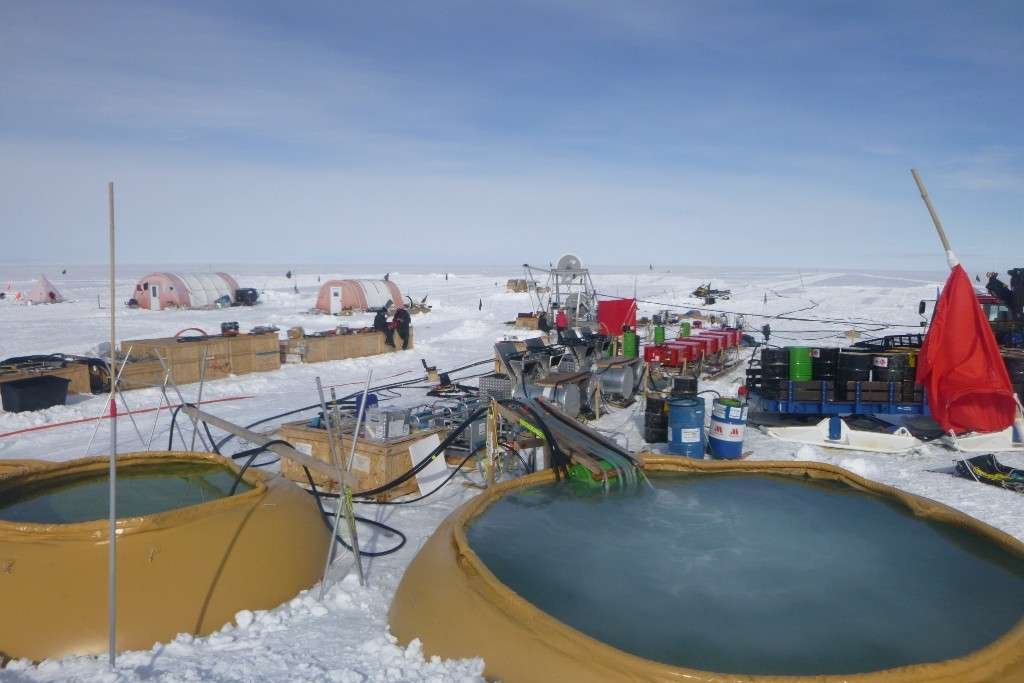Antarctic Hole
British scientists have dug a 7060 foot borehole, through the Antarctic ice sheet, using a hot- water drill. The comically long ice hole is the largest ever for West Antarctica, and it’s meant to improve our understanding of climate-related sea level rise.This project, run by the British Antarctic Survey, is called “Bed Access, Monitoring and Ice Sheet History,” or BEAMISH. It began 20 years ago and its scientists tried, but failed, to drill a hole in 2004. All these years of hard work and planning, it now appears, have finally paid off.
On January 8, a crew of 11 BEAMISH team members, after 63 hours of continuous drilling, finally reached down to the sediment below. From top to bottom the hole measures 1.3 miles (2,152 meters or 2.1 kilometres), which is the length of 20 football fields placed end- to-end.
“I have waited for this moment for a long time and am delighted that we’ve finally achieved our goal,” BAS lead scientist Andy Smith said in a statement. “There are gaps in our knowledge of what’s happening in West Antarctica and by studying the area where the ice sits on soft sediment we can understand better how this region may change in the future and contribute to global sea-level rise.”
This ice hole is now the deepest ever made with a hot-water drill in West Antarctica, the BBC reports. BEAMISH is currently working at the Rutford Ice Stream, a fast-flowing West Antarctic ice stream. As for the deepest hole of any kind ever drilled in Antarctica, that distinction goes to the 7,290-foot-deep (2,414 meters) borehole forming the IceCube Neutrino Observatory near the South Pole. Once they reached the bottom of the ice sheet to the sediment below, BEAMISH team members sent various instruments down through the bore hole to record ice temperature, water pressure, and to detect any deformations within the ice sheet. A primary concern of the BEAMISH project is to learn more about sea level rise. Scientists
are currently struggling to learn why sea level rise is happening faster than expected, and how long this process might continue. Keith Makinson, a physical oceanographer at BAS, said warmer ocean waters are chipping away at many of West Antarctica’s glaciers.
On January 22, BEAMISH drilled a second ice hole, and there are now plans for another about a kilometer away. The team will continue to work in Antarctica until mid-February.





